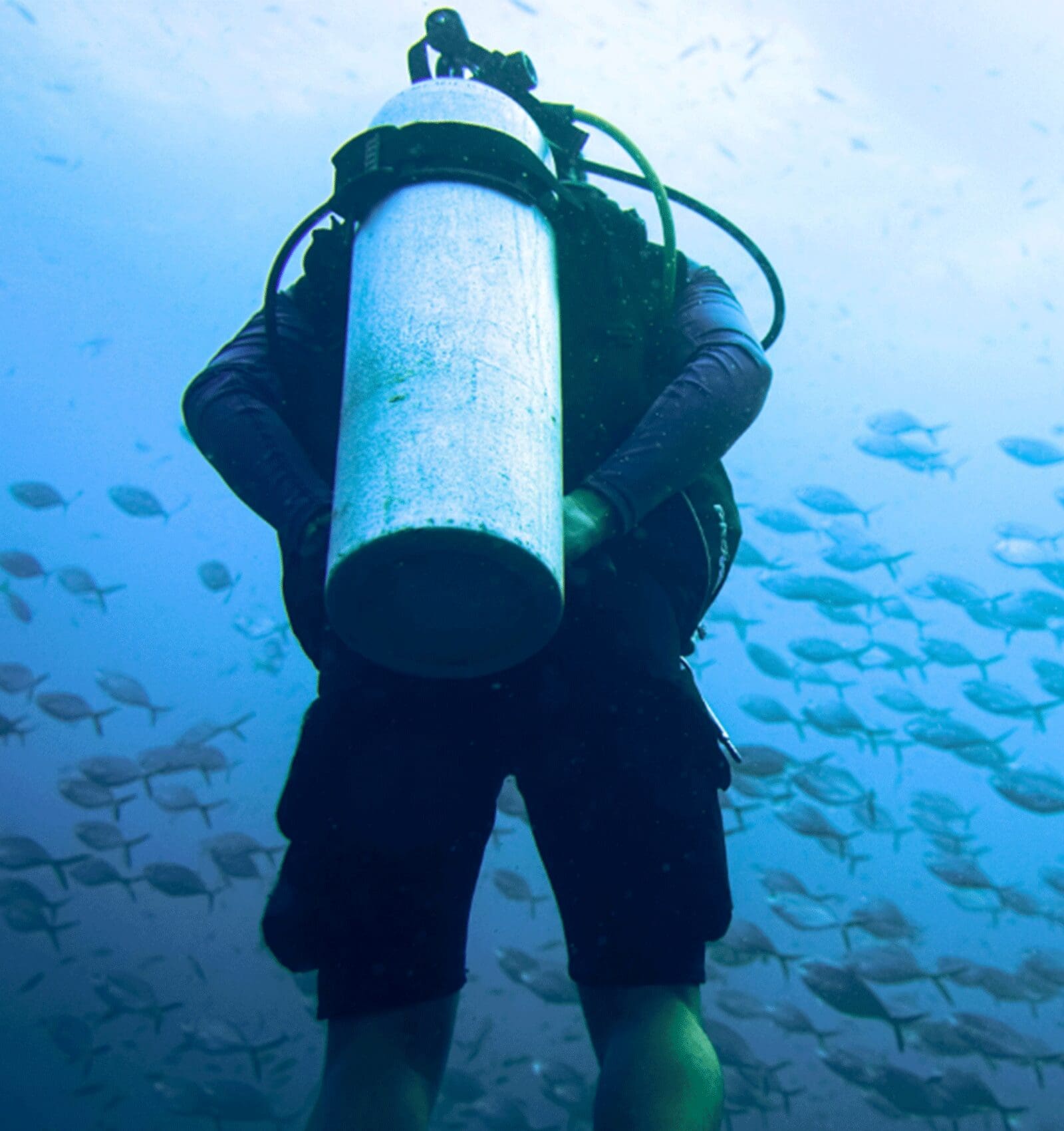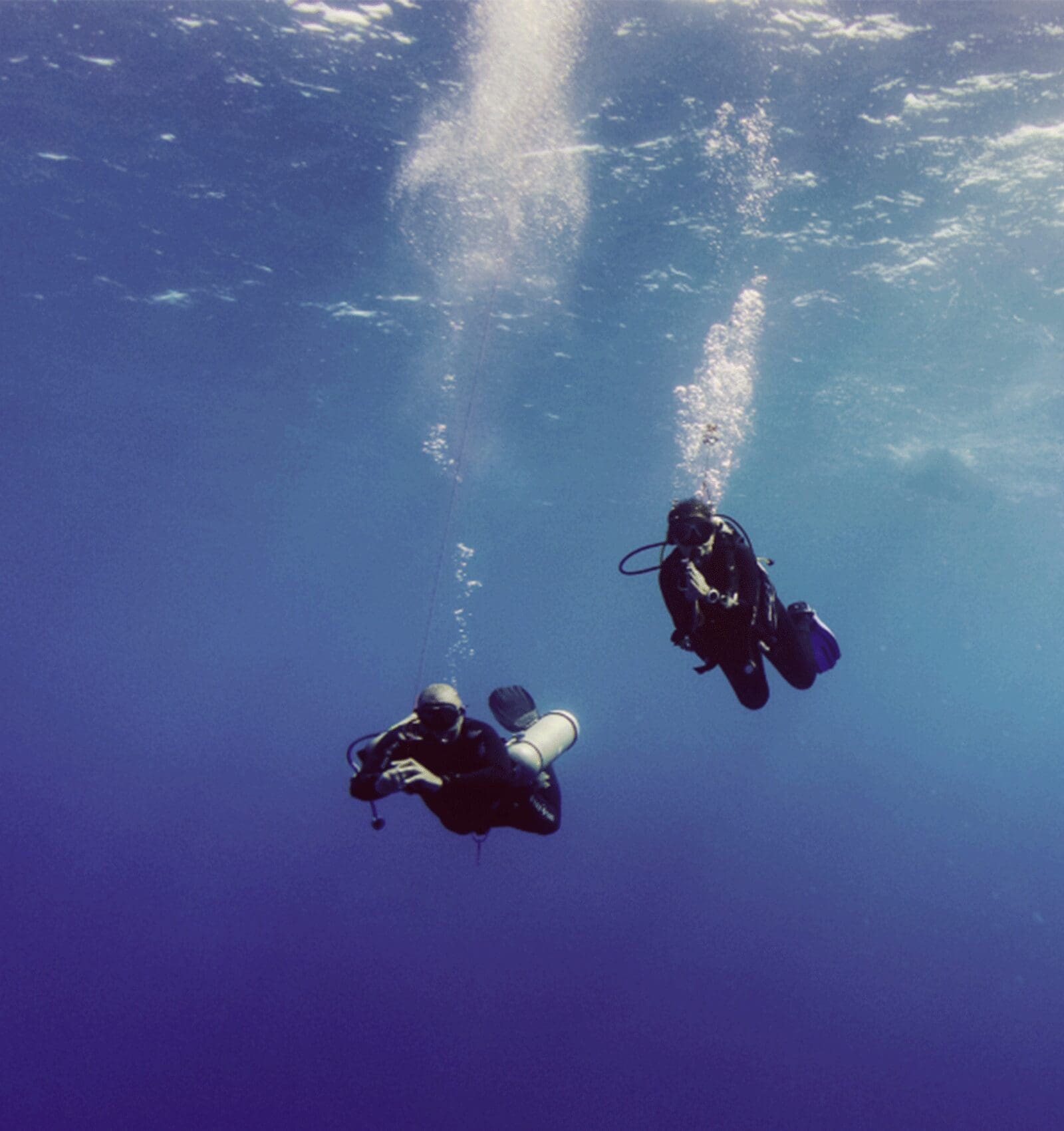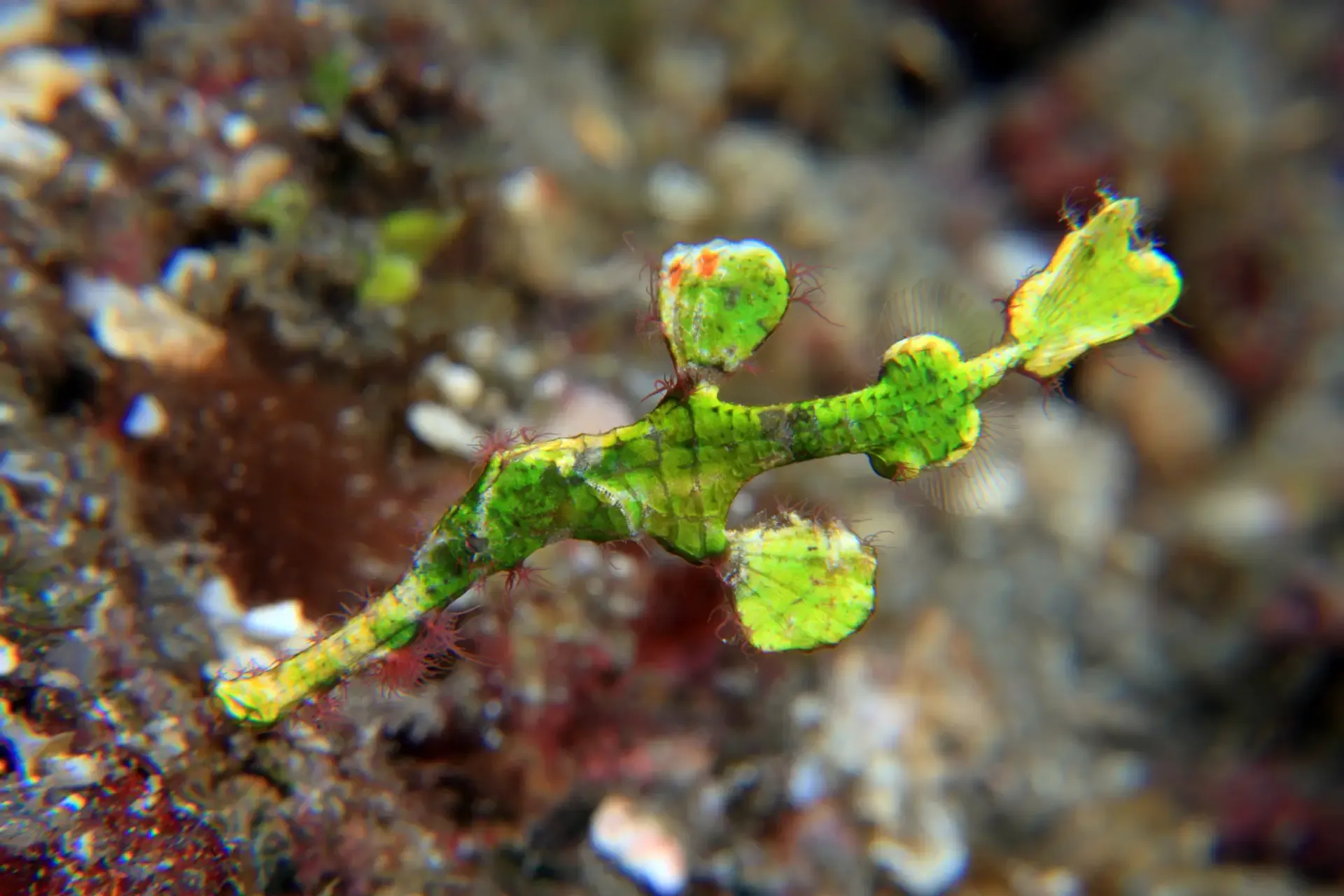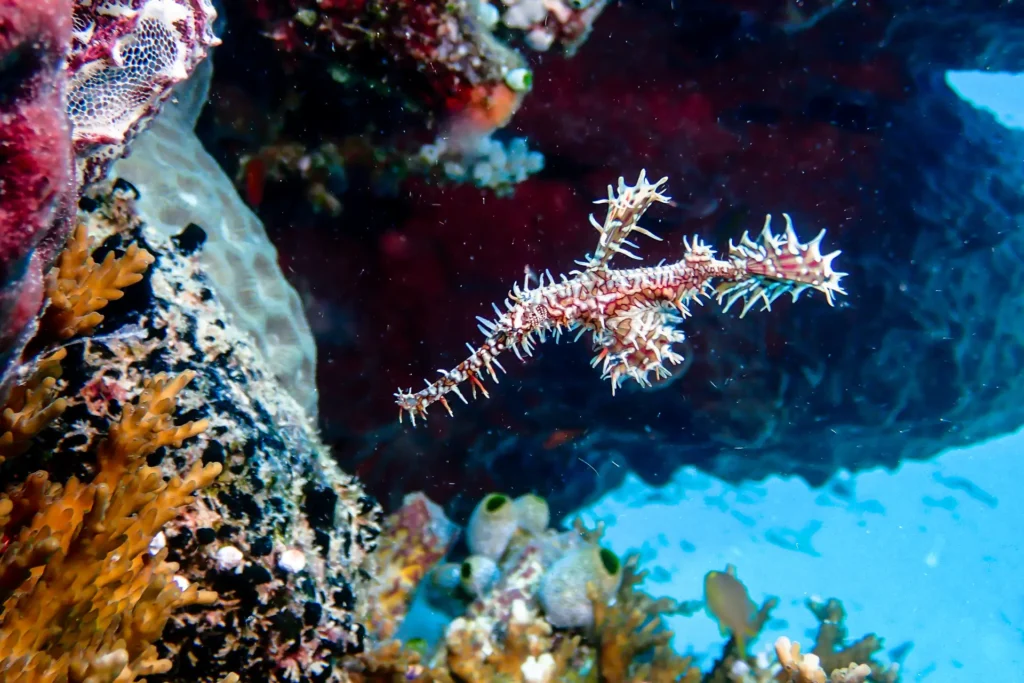Masters of Disguise: Exploring Frogfish at Boracay’s Dive Sites
Boracay’s underwater world is a haven for marine biodiversity, attracting divers from around the globe to its vibrant reefs and thriving ecosystems. While the island is famous for its colorful corals and large pelagic species, macro enthusiasts know it also hides some of the ocean’s most elusive and fascinating creatures: frogfish.
Known for their exceptional camouflage and unique behaviors, frogfish are a dream find for divers and underwater photographers. In this guide, we’ll delve into the world of frogfish, their intriguing characteristics, and where you can find them while diving in Boracay.
What Are Frogfish?
Frogfish belong to the anglerfish family and are masters of disguise, blending seamlessly with their surroundings. Their ability to mimic coral, sponges, or rocks makes them nearly invisible to predators and prey alike.
Key Characteristics of Frogfish:
- Size: Frogfish range from 2.5 cm to 38 cm, depending on the species.
- Appearance: They have stocky, rounded bodies covered in bumps or spines that mimic the texture of their habitat.
- Coloration: Frogfish can change their color to match their environment, further enhancing their camouflage.
- Lure: A distinctive feature is their illicium, a modified dorsal fin tipped with a lure (esca) resembling a worm or small fish.
Their fascinating adaptations make them one of the most sought-after species for divers exploring Boracay’s reefs.
Behavior and Feeding Habits
Frogfish are ambush predators, relying on stealth and their unique lure to catch prey. They remain motionless for long periods, waiting for unsuspecting prey to venture close. When the time is right, they strike with lightning speed, using their large mouths to create a vacuum that sucks in their meal.
What They Eat:
Frogfish primarily feed on small fish, crustaceans, and other reef-dwelling organisms.
Unique Behavior:
Unlike most fish, frogfish use their pectoral fins to “walk” along the ocean floor, a behavior that adds to their peculiar charm.
Where to Find Frogfish in Boracay
Boracay is home to several dive sites where frogfish are commonly found, thanks to its diverse underwater terrain and healthy reefs. Here are some of the top spots to look for these camouflaged wonders:
-
Angol Point:
- Known for its shallow reefs and coral-covered outcrops, Angol Point is a hotspot for macro life, including frogfish.
- Marine Highlights: Ribbon eels, butterflyfish, and frogfish hiding among coral formations.
-
Crocodile Island:
- With its vibrant coral gardens and sandy patches, Crocodile Island provides the perfect environment for frogfish to blend in.
- Marine Highlights: Filefish, reef pipefish, and the elusive frogfish nestled among sponges and rocks.
-
Balinghai:
- This dive site features a mix of sponges and coral reefs, making it an excellent location for spotting camouflaged frogfish.
- Marine Highlights: Trumpetfish, scrawled filefish, and frogfish expertly hidden in the reef.
-
Friday’s Rock:
- A compact site packed with biodiversity, Friday’s Rock often harbors frogfish alongside balloonfish, scorpionfish, and ornate butterflyfish.
Exploring these dive sites with an experienced guide can significantly improve your chances of spotting frogfish, as their camouflage makes them incredibly difficult to locate.
Tips for Spotting Frogfish
- Look for Movement: Frogfish are mostly sedentary, but their illicium (lure) may flicker as they try to attract prey.
- Scan Coral and Sponges Carefully: Frogfish blend into their environment, often mimicking the texture and color of coral or sponge.
- Go Slow: Move deliberately and take your time examining crevices and outcrops.
- Dive with a Guide: Local guides are experts at finding frogfish and can point out their hiding spots.
- Use a Dive Light: A light can help highlight textures and patterns, making it easier to identify camouflaged frogfish.
Why Frogfish Are Important to Boracay’s Ecosystem
Frogfish play a vital role in Boracay’s marine environment by maintaining the balance of reef ecosystems.
Predatory Role:
As ambush predators, frogfish help control populations of smaller fish and crustaceans, preventing overpopulation and maintaining ecological balance.
Indicator Species:
The presence of frogfish often indicates a healthy reef ecosystem, as they rely on abundant prey and undisturbed habitats to thrive.
By protecting Boracay’s reefs, we ensure a safe haven for frogfish and the many other species that call these waters home.
The Appeal of Frogfish for Divers and Photographers
For divers, spotting a frogfish is a thrilling experience. Their unique appearance and behaviors make them a favorite subject for underwater photographers.
Photographic Challenges:
- Camouflage: Capturing a well-camouflaged frogfish requires patience and a keen eye.
- Focus and Lighting: Proper lighting can bring out the intricate details of their skin texture and color patterns.
Many photographers return to sites like Crocodile Island and Angol Point specifically for the chance to photograph these fascinating fish.
Protecting Frogfish and Their Habitat
Frogfish, like many marine species, face threats from habitat destruction, pollution, and human activity. Divers can play a crucial role in protecting these creatures by practicing responsible diving.
How to Help:
- Avoid Touching Coral: Frogfish rely on healthy reefs for shelter and camouflage.
- Maintain Good Buoyancy: Prevent accidental damage to coral and sponges where frogfish may be hiding.
- Support Conservation Efforts: Participate in local clean-ups and reef restoration initiatives in Boracay.
By taking these steps, divers can help preserve Boracay’s rich marine biodiversity for future generations.
Why Frogfish Are a Must-See in Boracay
Boracay’s frogfish are a testament to the incredible diversity and adaptability of marine life. Their unique traits, fascinating behaviors, and importance to the ecosystem make them a highlight for divers exploring the island’s reefs. Whether you’re a seasoned photographer or a curious beginner, encountering a frogfish is an unforgettable experience that deepens your appreciation for Boracay’s underwater world.
Final Thoughts
Diving in Boracay offers a world of wonder, and discovering frogfish adds an extra layer of magic to the experience. These masters of disguise challenge divers to look closer, teaching us to appreciate the hidden details of the reef and the remarkable adaptations of marine life.
So, next time you gear up to explore Boracay’s vibrant dive sites, keep your eyes peeled for the elusive frogfish. With patience, a keen eye, and perhaps the guidance of a local dive expert, you might just uncover one of the ocean’s best-kept secrets.





